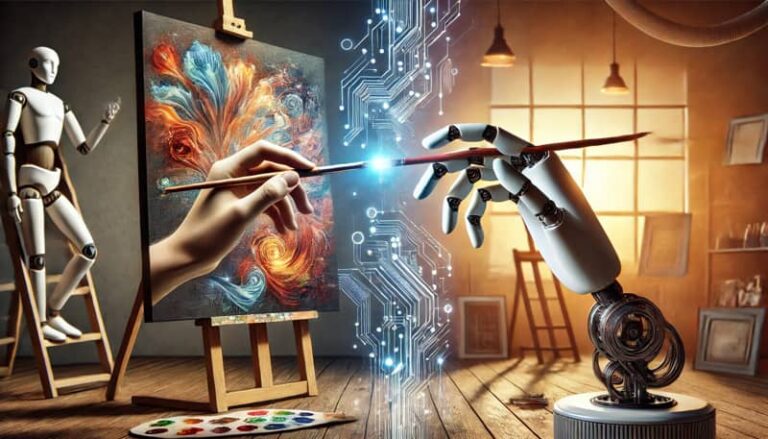
The use of artificial intelligence in the art world is transforming our concept of creativity. What happens, however, when a work is generated by an AI? Who is really its author? And most importantly: can it be protected by Ai copyright?
The Italian Supreme Court has drawn a clear line: a work can only be protected by copyright if there is significant human creative input. In essence, AI can be a powerful ally, but it cannot replace the hand-or mind-of the artist. The crucial point is precisely this: how much is enough to define a work as truly "human"? Will there never be true Ai copyright protection in Italy?
Writing a prompt, however detailed, may not be enough. The legal value shifts to active involvement: editing, composing, reworking. It is not enough to instruct a machine. It needs vision, choice, interpretation. It is in this subtle space that the future of generative art is at stake.
Imagine an artist using AI to create an abstract painting. The machine generates shapes and colors, but the artist intervenes, adds details, changes the balance, superimposes a personal visual logic. At that moment the work becomes his own, because it contains an unmistakable creative imprint. The same goes for a composer who relies on AI for a basic melody, but then changes its harmony, structure, orchestration. In both cases, copyright rests on the human presence that gives shape and meaning to the result.
The breaking point may come when we stop seeing AI as a tool and start seeing it as a co-author. If that moment comes, it is not just the right that will be challenged, but the whole definition of what it means to "create." In an era when the algorithm actively participates in the process, who will really be able to call themselves an author?
What if the traditional author disappeared? What if the figure of the artist became something different from what we have always known? AI does not erase creativity, but it deforms it, expands it, challenges it. It is possible that new art forms will emerge that we could never have imagined. But in this new scenario, how do we determine what is valuable?
Perhaps technology is not just a tool or a co-author. Perhaps it is a source of inspiration. A constant provocation that forces the artist to redefine himself. And this is where responsibility comes in: that of not giving up one's voice, even when the machine seems faster or brighter.
For serious and up-to-date legal insights, you can read the analysis in Digital Agenda, which comparatively addresses the Italian and U.S. situations on Ai copyright.
The debate, in the end, is more open than ever. The question is not only legal, but philosophical, identity-based. What does it mean to create today, when artificial intelligence is everywhere? And most importantly: what will it mean tomorrow?and what is true Copyright Ai?
Read also: DNA of LLMs hides a secret
"Art is what makes life more interesting than art itself."
- Robert Filliou


A response